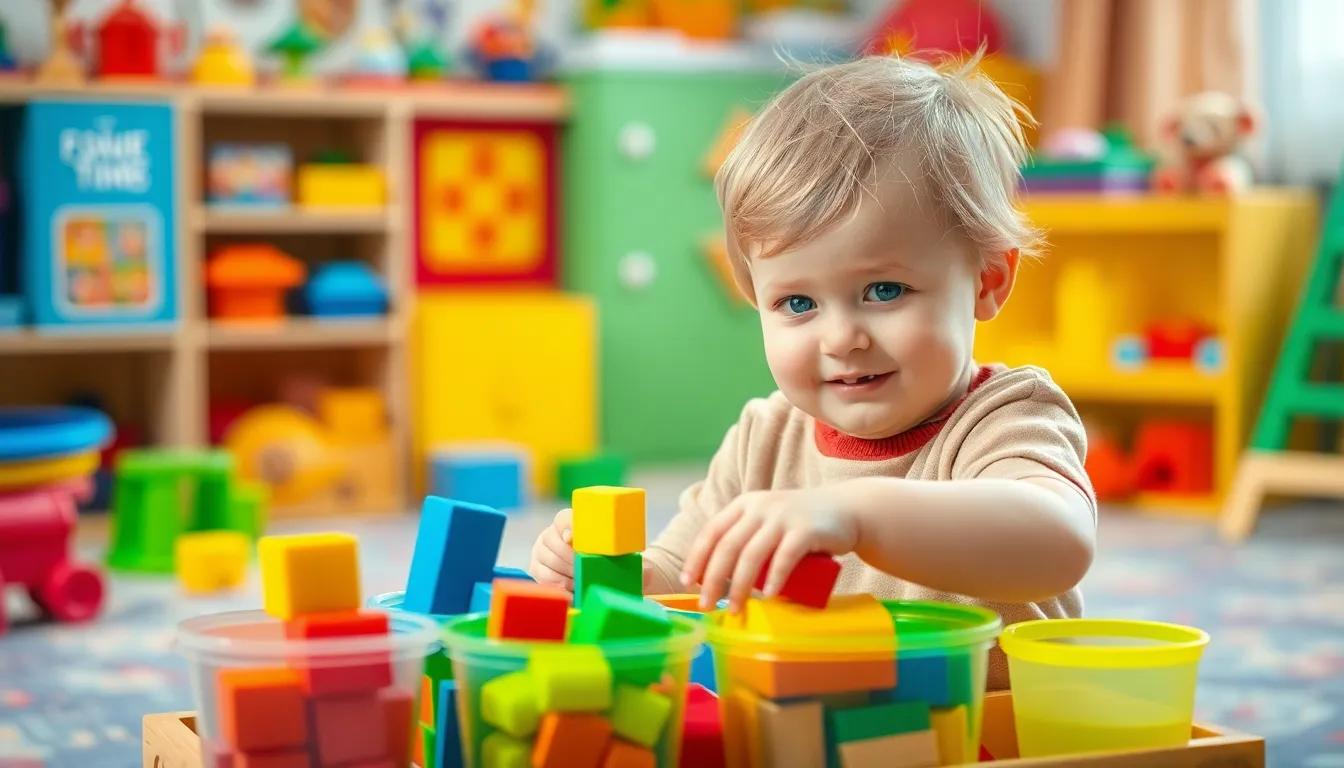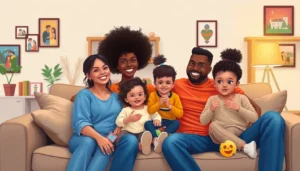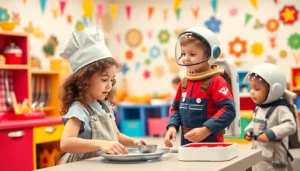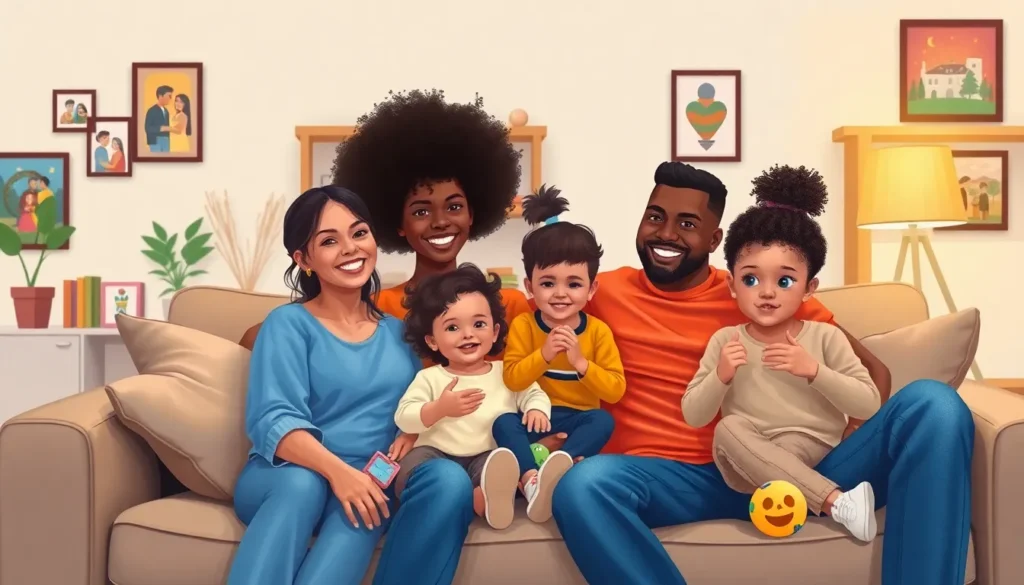Table of Contents
ToggleColor sorting activities aren’t just a fun way to keep kids entertained; they’re a sneaky method to boost learning while parents sip their coffee in peace. Imagine your little one, bright-eyed and full of energy, sorting colorful blocks like a mini Picasso organizing his palette. It’s not just playtime; it’s brain-building time!
Overview of Color Sorting Activities
Color sorting activities engage children in hands-on experiences that promote learning. These activities often involve various objects, such as blocks, buttons, or beads, organized by color. Sorting not only entertains children but also enhances cognitive skills and visual perception.
Facilitators can introduce many color sorting games. One option includes using colored bins, where children sort small toys based on color. Another activity features colored paper, allowing kids to match similar shades by placing objects on corresponding hues. Such activities encourage exploration and creativity while reinforcing color recognition.
Benefits of color sorting extend beyond basic learning. Research indicates that these activities improve fine motor skills as children grasp and manipulate objects. Engaging in sorting tasks enhances memory by requiring kids to recall and apply color concepts. Social skills also develop when children participate in group activities, sharing ideas and taking turns while sorting.
Examples of items for color sorting include natural objects like leaves, flowers, and stones, adding an element of nature appreciation. Additionally, using food items like fruits or candies can make activities more appealing. These variations keep children engaged and excited about learning colors.
Incorporating color sorting into daily routines fosters a fun educational environment. Utilizing common household items for these activities makes it easy for parents to create engaging learning experiences. Color sorting activities yield benefits that contribute to children’s growth and development in a playful manner.
Benefits of Color Sorting Activities

Color sorting activities offer numerous benefits for children’s growth and development. Engaging in these activities fosters valuable skills while providing fun learning experiences.
Cognitive Development
Cognitive development thrives during color sorting activities. Children learn to recognize and differentiate colors, enhancing their visual perception. Sorting objects into categories sharpens critical thinking skills, as kids assess and make decisions. Repetitive sorting reinforces memory retention, allowing children to recall and apply newfound knowledge. This hands-on approach encourages exploration, sparking curiosity and creativity in young minds. Studies indicate that early cognitive stimulation significantly influences later academic success, making color sorting a worthwhile activity.
Motor Skills Enhancement
Motor skills enhancement occurs naturally through color sorting games. As children manipulate small objects, they strengthen their hand-eye coordination and fine motor skills. Grasping, sorting, and placing items into designated areas develops dexterity. Engaging with various materials, such as blocks and buttons, facilitates tactile exploration. Opportunities for group activities arise, promoting cooperation and teamwork as children sort together. Learning to handle objects effectively also builds confidence in physical abilities, equipping children with essential skills for everyday tasks.
Types of Color Sorting Activities
Color sorting activities can take many forms, providing diverse and engaging experiences for children. These activities enhance learning while keeping play enjoyable.
Using Everyday Objects
Everyday objects serve as excellent tools for color sorting activities. Items like buttons, socks, or toy cars facilitate hands-on learning. Children can sort these items into bowls or bins based on their colors. They further develop cognitive skills as they distinguish between different shades. Using familiar objects not only makes the activity relatable but also encourages creative thinking. Parents can easily set up these activities around the house, making them accessible and fun.
Arts and Crafts Approaches
Arts and crafts offer unique avenues for color sorting. Engaging in projects like creating color collages can be both educational and artistic. Children can cut out colored paper pieces and categorize them into sections according to color. This method enhances fine motor skills while reinforcing color recognition. Additionally, children may paint or color images, focusing on specific color groups. Arts and crafts encourage expression and creativity, making learning enjoyable and interactive.
Implementing Color Sorting Activities
Color sorting activities are versatile and can be tailored for various age groups. Creating engaging experiences ensures children develop essential skills while enjoying the process.
Age-Appropriate Techniques
Toddlers benefit from simple activities using large, colorful objects. Throwing colorful balls into bins or stacking colored blocks introduces early sorting skills. Preschoolers can advance to more intricate tasks such as sorting buttons by size and color, enhancing their cognitive abilities. Kindergarten-aged children enjoy group activities like matching colored paper to items, fostering teamwork while reinforcing learning. Each age group finds appropriate challenges, encouraging growth and confidence in their skills.
Tips for Effective Engagement
Maintaining children’s interest during activities hinges on incorporating excitement. Use engaging materials, such as bright-colored items or interactive games, to capture attention. Set clear objectives by explaining the activity and showing how to sort items. Offer encouragement throughout the activity, emphasizing their progress and success. Create a fun and relaxed atmosphere that promotes exploration and creativity. Regularly change the sorting items to introduce novelty, keeping children eager to learn and participate.
Color sorting activities are a powerful tool for fostering children’s growth and development. They blend fun with learning by enhancing cognitive skills and fine motor abilities. By engaging in these activities, children not only learn to recognize colors but also develop critical thinking and memory retention.
Incorporating everyday objects into sorting games adds excitement and variety to the learning process. This hands-on approach encourages creativity and exploration, making education enjoyable. Parents can easily integrate these activities into daily routines, creating enriching experiences that contribute to their children’s overall development.
Ultimately, color sorting activities lay a strong foundation for essential skills that children will carry into their future learning journeys.










